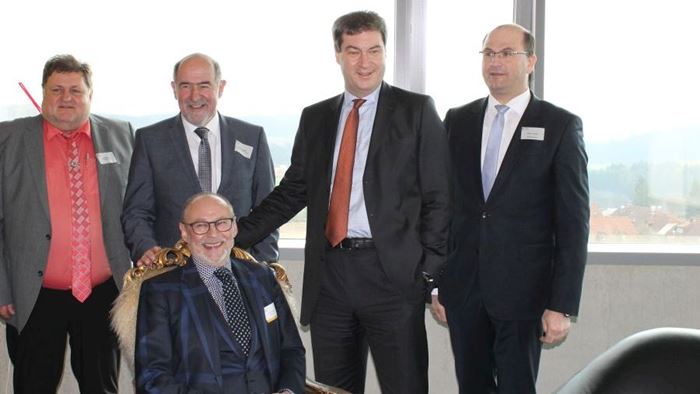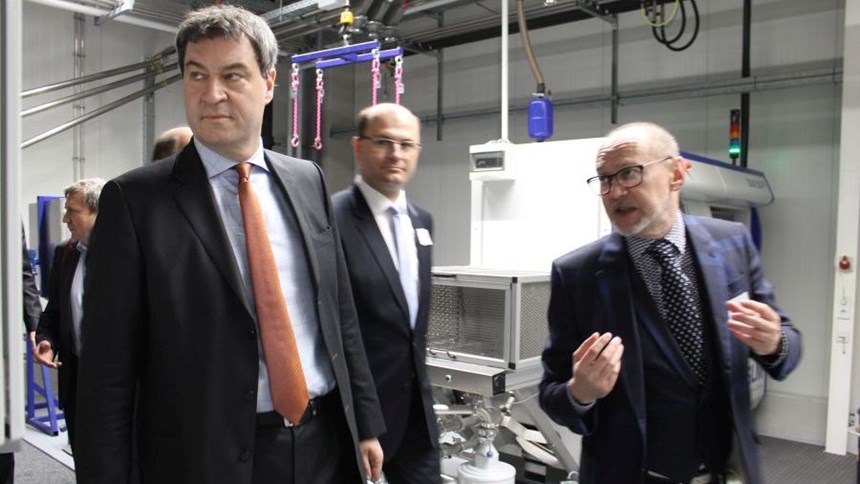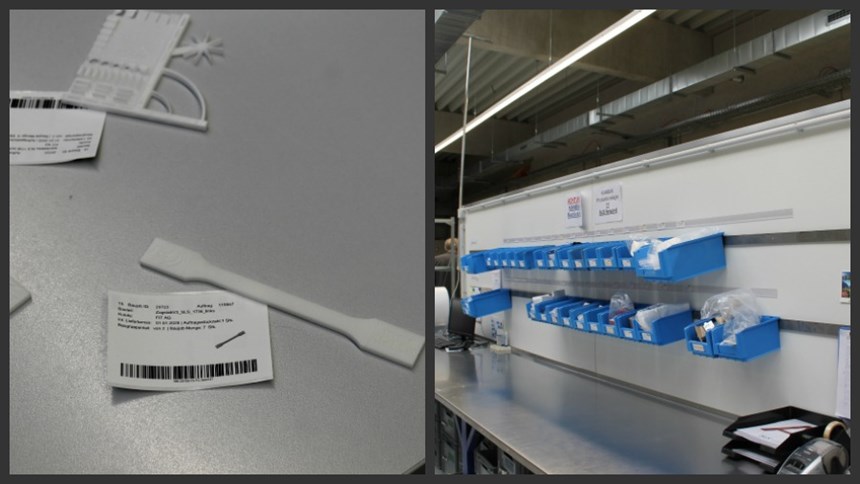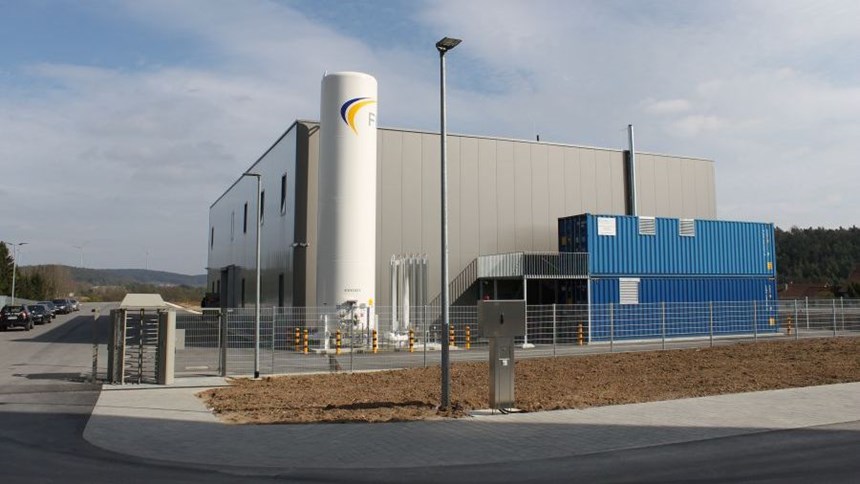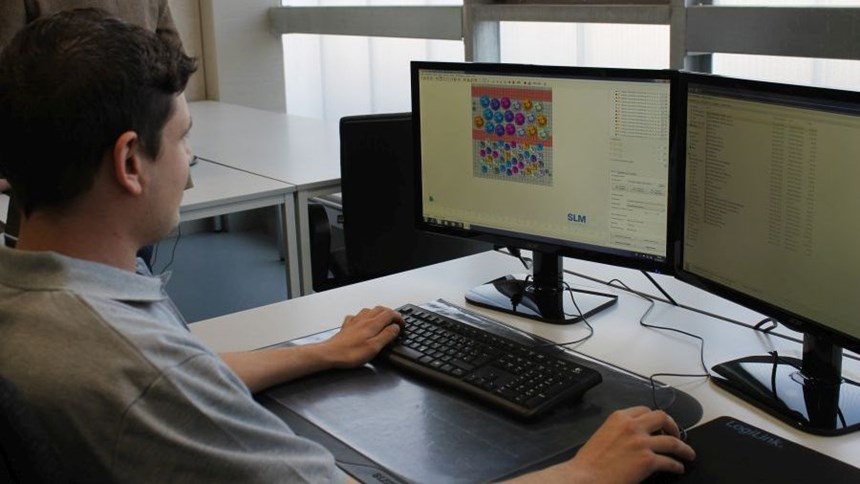Entering a New Era of Industrial Production: Factory for High-Volume AM Is Designed to Go Global
Germany-based FIT AG has kicked off a new phase of on-demand, near-net shape industrial-scale AM and aims to roll out its AM factory template at other sites around the world by building a global, scalable production concept.
What do McDonald’s and additive manufacturing (AM) specialist FIT Group, based in Lupburg, Germany, have in common? Nothing, at first sight. But digging a bit deeper into the mind of company founder Carl Fruth, who invested 20 million euros in a new purpose-built facility for high-volume AM, as well as a new office building in 2016, you realize that it takes determination and an innovative mind to create something new; exactly what Fruth and Ray Kroc, who became a franchise agent for Richard and Maurice McDonald in 1955, have in common.
Who would have expected McDonald’s to become a burger behemoth that has more than 35,000 stores in 119 different countries? In fact, one could argue that McDonald’s has created one of the greatest business models to follow, which is exactly what Fruth is doing.
“McDonald’s has succeeded in reproducing their business model all around the world through consistent restaurant operations procedures, service, quality and cleanliness,” Fruth said during the company’s Technology Days 2017, where the company opened the doors to what it believes is the world’s first facility entirely designed for high-volume AM. “What is more, they managed to adjust their production technology and processes to customer demands as well as to the average employee’s skills and abilities.”
McDonald’s makes burgers in six packs, not in a batch of eight, three or eleven, Fruth said. Why? Because they figured that six is the right amount for any employee to handle; whether he is a skilled chef who would be able to prepare twelve burgers at once or whether he manages four at a time. “It is not about what an individual is good at, but what can be optimally reproduced and rolled out all around the world. Once you know that six is the right amount to produce simultaneously, that’s the point where you start investing in barbecue machines and install them in your restaurant. That’s the key to industrialization.”
Creating the Perfect AM Factory Template
Transferring this concept to Fruth’s own business, his vision becomes clear: Finding the optimum concept for an AM factory, which works perfectly for the company, the customer and the employees, and then replicating it one-to-one all over the planet.
And because Fruth is convinced that “a vision without execution is just hallucination” he has been working on his AM factory since 2004. Now it has become a reality and the purpose-built building hosts a metal and plastics AM factory on two stories.
The metal production area boasts three manufacturing lines with five SLM 500 HL selective laser melting machines each. There are up to seven different material feeding systems available for stainless, tool steel, titanium, aluminum and Inconel. Moreover, there are four separate SLM systems outside the line for one-off orders. Additionally, FIT runs two Arcam EBM Q20 systems. The factory is currently producing 25 kg of parts every day, and capacity utilization is currently about 45 percent, Fruth said.
“We can reach up to 90 percent capacity utilization, but only through series production. We are still making more prototypes than end-use parts, so the utilization rate is quite good considering it was at about 38 percent with only seven machines in 2014.”
The factory’s upper floor hosts the plastics AM factory with three different material feeding systems and 12 selective laser sintering (SLS) systems, which process materials like PA11, PA12, PAGF, PAAL and TPU. Here, 1,500 different parts are produced every day. For just-in-time production FIT uses the Kanban system and in-house developed software, and an ERP system coordinates the production from pre-processing (data translation, data check, data repair, data orientation, support generation, job placement, parameter setting, slicing) to processing (machine setup, job start, job build, part removal) and postprocessing (job control, pre-heat treatment, part separation, support removal, post-heat treatment, verification, milling, measurement).
Quality control is important for consistent and repeatable part quality, which is essential for series production applications. Consequently, FIT has numerous measuring systems in place, including CMMs, CT Scanners, a 3D profilometer, optical microscopes, tensile testing machines, X-ray fluorescence spectrometry, optical 3D scanners and more.
Additive Design and Manufacturing
FIT is not only leveraging its expertise to support companies in the automotive, aerospace, medical and general engineering industries with the outsourcing of component production, but is also backing its clients with parts design and development. “We can only industrialize AM if there are actual products which can be mass-produced in an AM factory,” Fruth said. “We have to offer our customers added value by manufacturing their products additively. But then the products demand a different design, and the way of thinking is fundamentally different when using additive technologies. That’s the reason why we add design to AM (additive design and manufacturing [ADM]) and offer ADM-Engineering, ADM-Volume Manufacturing and workshops for anyone interested in design for AM manufacturing.”
FIT’s high-volume production AM factory is already in full swing, and Fruth plans to replicate this master concept in Germany this year to add capacity and to test whether the concept is ready for a global rollout. The plan is to be ready for this by the end of 2018, but the factory template with its entire production process has to be perfect, Fruth emphasized, as the company is looking at an investment volume of 20 to 30 million euros per factory.
Commissioning Industrial-Scale AM Close to Customers
The United States is one of the countries which will see an FIT factory in the coming years to commission industrial AM close to customers, Fruth said. The company is already represented in the United States by FIT America located in Southborough, Massachusetts.
FIT has just expanded its U.S. activities and appointed Kenneth D. Gray as chairman of FIT America. “FIT’s additive design and manufacturing capabilities are second to none, but the business model is even more intriguing,” Gray said. “Partnerships to accelerate industrial clients toward their own additive independence are what I am most excited about. Our aim is for additive to be a mainstream tool for U.S. industrial manufacturers—and soon.”
Vice President Sales John Baliotti added that sales of additively manufactured parts in the German factory go well as customers can rely on a certified, unified and tested process. He agrees with Fruth that transport costs are negligible as most AM parts are light and can be delivered within 1.5 days.
However, Baliotti noted that shipping is not that easy and quick anymore when you ship parts worth more than $1,000 due to customs, and delivery times increase. “Delivery times are crucial, that’s why we’d welcome a factory in the U.S.”
And the factory will come. While Fruth did not commit himself to a particular date, he is positive that factories will be established locally in various countries, not only because of shipping costs and delivery times but due to certain constraints as found in the aerospace and defense industry, for instance, where countries like the United States or Israel wouldn’t want their missile heads to be made in Germany or other countries.
“Our goal is to make FIT one of the world’s leading manufacturer in AM,” Fruth concluded. “Therefore, we need to produce parts much more cost efficiently than anyone else, and create a McDonald’s-style global, scalable business concept. It’s not an easy task, but to quote Ray Kroc: If you're not a risk taker, you should get the hell out of business.”
Related Content
Beehive Industries Is Going Big on Small-Scale Engines Made Through Additive Manufacturing
Backed by decades of experience in both aviation and additive, the company is now laser-focused on a single goal: developing, proving and scaling production of engines providing 5,000 lbs of thrust or less.
Read MoreVulcanForms Is Forging a New Model for Large-Scale Production (and It's More Than 3D Printing)
The MIT spinout leverages proprietary high-power laser powder bed fusion alongside machining in the context of digitized, cost-effective and “maniacally focused” production.
Read MoreThis Drone Bird with 3D Printed Parts Mimics a Peregrine Falcon: The Cool Parts Show #66
The Drone Bird Company has developed aircraft that mimic birds of prey to scare off problem birds. The drones feature 3D printed fuselages made by Parts on Demand from ALM materials.
Read MoreVideo: 5" Diameter Navy Artillery Rounds Made Through Robot Directed Energy Deposition (DED) Instead of Forging
Big Metal Additive conceives additive manufacturing production factory making hundreds of Navy projectile housings per day.
Read MoreRead Next
3D Printed Polymer EOAT Increases Safety of Cobots
Contract manufacturer Anubis 3D applies polymer 3D printing processes to manufacture cobot tooling that is lightweight, smooth and safer for human interaction.
Read MoreBike Manufacturer Uses Additive Manufacturing to Create Lighter, More Complex, Customized Parts
Titanium bike frame manufacturer Hanglun Technology mixes precision casting with 3D printing to create bikes that offer increased speed and reduced turbulence during long-distance rides, offering a smoother, faster and more efficient cycling experience.
Read MoreCrushable Lattices: The Lightweight Structures That Will Protect an Interplanetary Payload
NASA uses laser powder bed fusion plus chemical etching to create the lattice forms engineered to keep Mars rocks safe during a crash landing on Earth.
Read More

